Musings on vacation sites, consumption, and resilient communities

Posted July 16, 2010 at 1:29PM
When one can afford it, travel can be a wonderful experience. Many of us relish the adventure of seeing new places, eating new foods, experiencing very different cultures, and communicating with people who don’t usually speak our first language. And when we travel we tend to choose attractive places, of course. More often than not, for ourselves and most of our friends, these are places where it’s easy to walk and where ‘the landscape’ and ‘the community’ may mix gently in places but generally don’t interfere with each other.
(This is another post jointly authored with my friend and occasional collaborator Lee Epstein, a land use planner and attorney who has worked long and well for conservation and smart communities in my part of the world. The idea was Lee’s; I added the photos and worked my own perspective into the narrative. I’m currently planning a vacation, and Lee had a nice one earlier this year.)
 Sometimes we can’t help but wonder, though, whether some of these wonderful cities, towns and landscapes are doomed for the future by ill-considered development, resource depletion or, increasingly, sea level rise (to say nothing of an oil spill). But travel can also remind us that there are places around the world with cultural values and systems that remarkably resist such losses, at least the ones related to development and at least locally.
Sometimes we can’t help but wonder, though, whether some of these wonderful cities, towns and landscapes are doomed for the future by ill-considered development, resource depletion or, increasingly, sea level rise (to say nothing of an oil spill). But travel can also remind us that there are places around the world with cultural values and systems that remarkably resist such losses, at least the ones related to development and at least locally.
It’s not really that development and a degree of change haven’t reached such locales. It’s more like they have decided, consciously or not that, at least in their corners of the world, community aspirations are measured not by how many cars one owns or how many miles of paved highway there are on which to drive them; nor by how massively large one’s farm is; nor by how many billions of dollars, euros, rands, pesos or renmins one has moved today on an electronic screen.
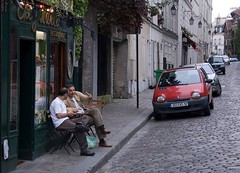 Rather, quality of life is measured in the small miracle of spring calving, or local goods and services exchanged for a fair price; the satisfaction of honorably providing enough for one’s family without necessarily taking from another’s – or indeed, stealing from one’s own future; the great joy of living with, and not just permanently removing things from, both natural and agricultural worlds. Finally, quality of life is measured within the parameters of community, with neighbors known and unknown, in the small joys of eating and imbibing at the local pub, visiting the local park or square, shopping at the local grocery or farmers’ market, choosing a shirt at a local clothing store, taking a local hike or bike-ride – get the (local) picture?
Rather, quality of life is measured in the small miracle of spring calving, or local goods and services exchanged for a fair price; the satisfaction of honorably providing enough for one’s family without necessarily taking from another’s – or indeed, stealing from one’s own future; the great joy of living with, and not just permanently removing things from, both natural and agricultural worlds. Finally, quality of life is measured within the parameters of community, with neighbors known and unknown, in the small joys of eating and imbibing at the local pub, visiting the local park or square, shopping at the local grocery or farmers’ market, choosing a shirt at a local clothing store, taking a local hike or bike-ride – get the (local) picture?
We are not unique in these observations, of course. These kinds of practices and values are frequently well embedded in, for example, Steve Mouzon’s ‘original green’ work, and that of Chuck Marohn’s ‘strong towns,’ too. (Some of the photos for this post, by the way, have been pilfered from the collection Steve assembled for his excellent new book, with his kind assent.)
Maybe our view of these places is gauzy and unrealistic, seen through the eyes of tourists taken in by charm and nostalgia, perhaps a slowed-down life, and no small amount of beauty. But we really do think that some of these towns, where the inhabitants keep deeply instilled values and fully participate in holistic civic structures and social communities, have been moderately to very successful in holding on to something many American communities may once have had but now may have forgotten -- or at best, seriously misplaced. From our own travels we think, for example, of towns and cities in the Netherlands or the west of Ireland, parts of Italy, Spain, France and Central Europe. We daresay there are even some left in the US and Canada. Again, these places aren’t untouched by modern striving; they are merely not damaged significantly by it.
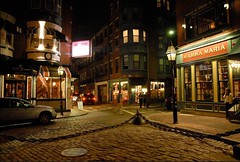 The elegant resilience of such a model, and its strong hold on both urban and natural worlds, doesn’t seem to be related, necessarily, to how isolated a place is, or how much contemporary influence it has experienced. Many of these same places are entirely integrated into the modern world, with complete access to electronic media, advanced educational opportunities, and a full range of trades and professions; indeed, they are often vibrant economically. But these modern accoutrements provide the context for living, not its content. And, for the most part, the towns and cities that compose the constellations of these communities are tight, compact and walkable, and usually serviced by efficient inter and intra-city bus or rail. Leakage of new development into the countryside happens, but it’s rare, compared with sprawling places. So rural small farms and their local, supportive infrastructure maintain, and forested areas are also allowed to flourish nearby.
The elegant resilience of such a model, and its strong hold on both urban and natural worlds, doesn’t seem to be related, necessarily, to how isolated a place is, or how much contemporary influence it has experienced. Many of these same places are entirely integrated into the modern world, with complete access to electronic media, advanced educational opportunities, and a full range of trades and professions; indeed, they are often vibrant economically. But these modern accoutrements provide the context for living, not its content. And, for the most part, the towns and cities that compose the constellations of these communities are tight, compact and walkable, and usually serviced by efficient inter and intra-city bus or rail. Leakage of new development into the countryside happens, but it’s rare, compared with sprawling places. So rural small farms and their local, supportive infrastructure maintain, and forested areas are also allowed to flourish nearby.
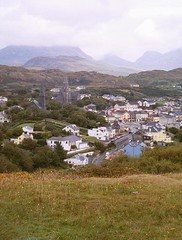 Why do these places exist and thrive, where in most of our country they are the extraordinarily rare exception? What does it take to replicate such models here and elsewhere around the world where growth is sometimes a cancer, uncontrolled and malignant? Steve and Chuck, referenced above, provide some answers. And today we would like to add to the discussion by offering three principles, to be provided in equal measure:
Why do these places exist and thrive, where in most of our country they are the extraordinarily rare exception? What does it take to replicate such models here and elsewhere around the world where growth is sometimes a cancer, uncontrolled and malignant? Steve and Chuck, referenced above, provide some answers. And today we would like to add to the discussion by offering three principles, to be provided in equal measure:
First, there needs to be a commonly understood social contract that most folks in a community buy into. What do we want to be when, and as, we grow? Can we, as an entire community of different souls, with different ambitions and different circumstances, agree on a vision of the community’s future physical structure, and the community institutions, finances, and societal foundations necessary to support it? In parts of Old Europe, there still is a strong historical bond that undergirds such a contract, and the vision may be unspoken. While such history is useful, though, we don’t believe it absolutely essential. Such a vision can be developed over time, but it takes work and long-term commitment to do so.
Second, there needs to still be local capacity to accommodate local economic and social activity. 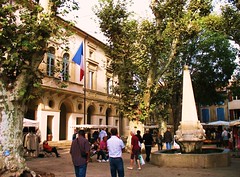 By that we mean there need to be local shops to shop in, local squares to sit and parks to play in, access to natural areas nearby, and good public transit or walkable, bikeable streets so people may move about efficiently with minimal impact. In other words, “progress” cannot already have wiped out the place itself, and the community needs to have a commitment to enhancing its sense of place still further with appropriate investments.
By that we mean there need to be local shops to shop in, local squares to sit and parks to play in, access to natural areas nearby, and good public transit or walkable, bikeable streets so people may move about efficiently with minimal impact. In other words, “progress” cannot already have wiped out the place itself, and the community needs to have a commitment to enhancing its sense of place still further with appropriate investments.
Third, in order to keep the contract, the broad, community-wide agreement must be translated into political reality. We are reminded of the wisdom of a colleague who was once asked how in the world his western US city had managed to attract so much wonderful redevelopment and also protect the countryside. With a twinkle in his eye, he answered that they had indeed found the miracle tool, and it’s called…zoning! Of course, “zoning” is not the answer to everyone’s prayers, and in so many places the tool has been used to truly horrible effect, essentially mandating sprawl. 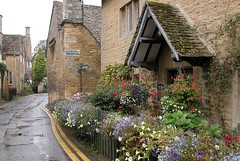 But the point is that, in most places across our country, our local communities, our states, and even the federal government already possess the necessary policy and economic tools. We just need to come together and be willing to deploy them with imagination, a bit of flexibility and, just as important, with courage and staying power.
But the point is that, in most places across our country, our local communities, our states, and even the federal government already possess the necessary policy and economic tools. We just need to come together and be willing to deploy them with imagination, a bit of flexibility and, just as important, with courage and staying power.
We won’t argue that these things are all that it will take to right a ship that’s listing so heavily, and put the future of many more of our communities back onto a more stable, desirable and sustainable course similar to that of some places we have visited. But these commitments need to be in the mix. Where they do not now exist, they must be created. And, if you’ll pardon our extension of the metaphor, we do know that if we don’t take the helm, start bailing, hoist the sails, put our oars in the water (you know, all those energetic nautical activities), the ship is unlikely to right itself. Without such resolve we may mightily regret, sooner than we wish to contemplate, that the places we love, and honest and good ways of living, have been lost.
Move your cursor over the images for credit information.

